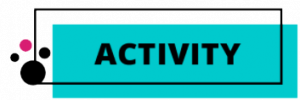Module 2: Introduction to Digital Methods for Disability Studies
2.2 Introduction to Digital Methods
This Pressbook is intended to aid your understanding of the important and empowering role that digital methods can play in generating and sharing knowledge about disability. But what do we mean by ‘digital methods’? There is no strict definition because, like disability, digital methods are constantly evolving; they are being constantly re-imagined and re-examined by disabled people and scholars. Digital methods describe the online opportunities we have to share and create knowledge, to organize and advocate, to tell stories to and support one another.
Digital methods, in the context of any academic discipline, can be broadly defined as a set of “…developed standards for how best to create, organize, present, and preserve digital information so that future generations of teachers, students, scholars, and librarians may still use it” (Williams, p. 202). The term digital methods traditionally refers to the techniques used by diverse groups to create, share, and preserve the knowledge of their field in a digital medium.
As we learned in Module 1, disability studies seeks to understand disability from the perspective of disabled people. It challenges the medical-driven view that disability is a form of deficiency by elevating the voices of disabled people, where difference is perceived from a more positive and nuanced perspective. In the words of philosopher Elizabeth Barnes,
“As disabled people, we are forever being told that there is something about our bodies that is lacking, that is less than. Disability pride says it doesn’t have to be that way. Disability pride says that we have minority bodies, but we don’t have – we refuse to have – tragic bodies.”
(as quoted in Shew, 2020, p. 42)
In disability studies, we foreground the knowledge of disabled people to challenge ableist tropes. Therefore, as we learn about and practice digital methods for disability studies, we are also considering the ways that these methods increase and amplify a wide range of voices. This amplification of voices also includes intentionally reflecting on and diversifying who we think about as making and sharing disabled knowledge.

Scavenger Hunt
Before entering too far into the theoretical, let’s do an activity that is intended to get you thinking about the role digital media plays in disabled people’s lives. Open the following link and then follow the instructions below.


